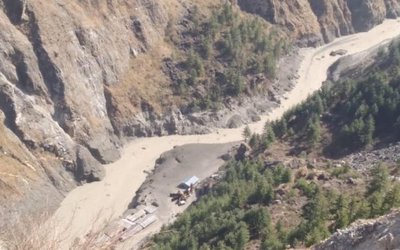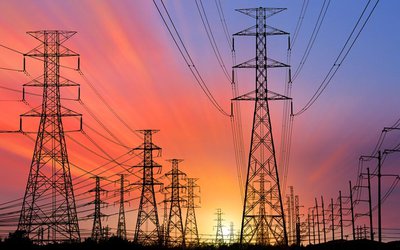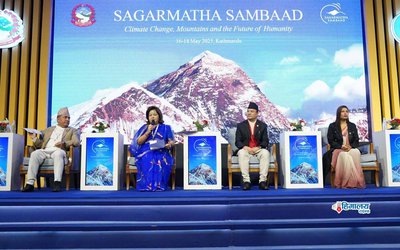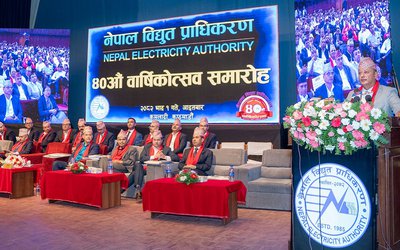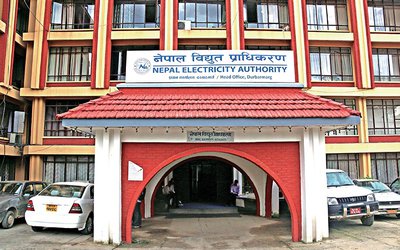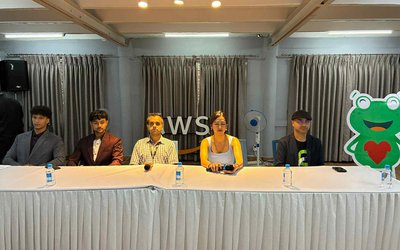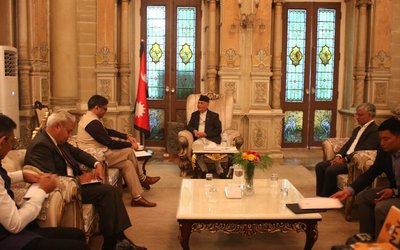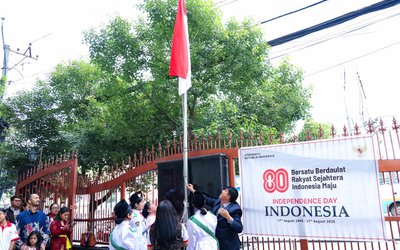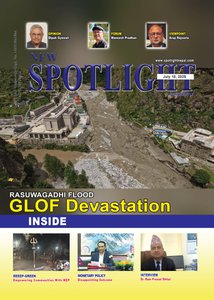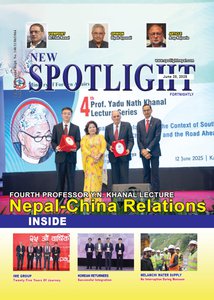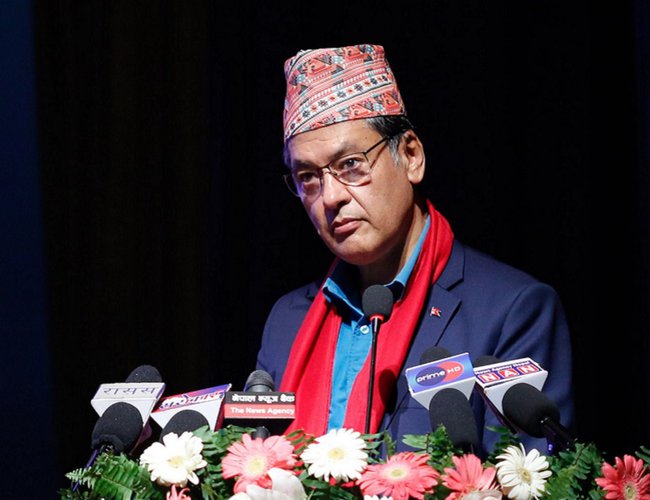
Nepal Electricity Authority (NEA) is celebrating its 40th anniversary this Sunday. The organization was established under the Nepal Electricity Authority Act, 2041 B.S. (1984 A.D.). On the occasion of the anniversary, NEA’s Executive Director Hitendra Dev Shakya has released a goodwill message highlighting the institution’s past, present, and future strategic directions.
"It gives me immense pride to present the activities carried out by the Nepal Electricity Authority during the fiscal year 2081/82 B.S. (2024/25 A.D.). Established under the NEA Act, 2041, the Authority is celebrating its 40th anniversary today. On this occasion, I express my sincere gratitude to all those who have contributed to our long journey from their respective fields."
This significant day provides an opportunity to reflect on past achievements, address current challenges, and reaffirm our commitment to contribute to Nepal’s progress. Over the past four decades, NEA has established itself as the backbone of Nepal’s energy sector. Since ending the long-standing era of load shedding, the Authority has focused on ensuring reliable and quality electricity supply across the country and strengthening customer service. It has also been successful in generating consistent profits over recent years.
To achieve the government’s energy development goals and support the creation of a prosperous Nepal, the Authority is continuously working. NEA is actively involved in the construction of strategic high-voltage transmission lines and substations, large reservoir-based and semi-reservoir-based hydropower projects, strengthening of the distribution system, and development of infrastructure to supply electricity to consumers.
The Authority is committed to:
- Promoting private sector participation,
- Ensuring transparency, accountability, and efficiency in internal processes,
- Digitizing operations,
- Delivering excellent customer service.
Summary of Key Activities and Achievements in Fiscal Year 2081/82 (2024/25):
a) Operational Performance Review
- By the end of FY 2081/82, the total installed capacity in the national electricity system reached 3,591 MW.
- During the year, the national system had access to 15,641 GWh of electricity:
- NEA and its subsidiaries contributed 34%
- Independent Power Producers (IPPs) contributed 55%
- 11% was imported from India
- Domestic electricity consumption increased by 10.7% compared to the previous year, reaching 11,319 GWh.
- Electricity export to India increased by 22.33%, reaching 2,380 GWh, while import from India totaled 1,712 GWh, resulting in a net export of 668 GWh for the fiscal year.
- On 18th Ashadh 2082 (early July 2025), the peak demand on NEA’s system reached 2,901 MW, of which:
- 2,214 MW was consumed domestically,
- 687 MW was exported to India.
- During the dry season, due to reduced output from run-of-river projects, a maximum of 274 MW was imported from India in Poush 2081 (December–January).
Other Key Statistics:
- Total customers increased by 4.6%, reaching 5.71 million (excluding about 470,000 customers under community rural electrification).
- Of total customers:
91.08% are domestic
1.23% are industrial
7.69% fall under other categories
- National grid coverage reached approximately 98%
- Annual per capita electricity consumption increased from 420 units to 465 units
- Electricity leakage decreased by 0.47%, reaching 12.26%
- Average electricity sales per customer increased from 1,873 units to 1,978 units
To measure the reliability of the distribution system, NEA has begun implementing international indices:
- SAIFI (System Average Interruption Frequency Index)
- SAIDI (System Average Interruption Duration Index)
These indices will help track and compare the system’s reliability on an annual basis.
b) Financial Performance Review
Including an income of NPR 17.47 billion from electricity exports, the Nepal Electricity Authority (NEA) earned a total of NPR 125.27 billion from electricity sales in fiscal year 2081/82. This is an 8.46% increase compared to FY 2080/81. Including other sources of income, the total revenue for FY 2081/82 reached NPR 138.87 billion.
In FY 2081/82, NEA’s total operating expenses increased by 10.15% compared to the previous fiscal year, reaching NPR 97.78 billion. The expenditure on electricity purchase alone increased by 11.73%, totaling NPR 77.10 billion. Other major expenses include:
- Generation: NPR 2.07 billion
- Transmission: NPR 3.24 billion
- Distribution: NPR 12.22 billion
- Royalty: NPR 1.84 billion
In addition to these, interest payments, depreciation, and foreign exchange losses contributed to a total expenditure of NPR 129.81 billion in FY 2081/82.
NEA's pre-tax profit in FY 2081/82 was NPR 9.06 billion, which is a 37.32% decrease compared to FY 2080/81.
The total assets of NEA increased by 6.2% compared to FY 2080/81, reaching NPR 684.91 billion in FY 2081/82. Excluding government grants, streetlight subsidies, and trunk line arrears, the Authority’s average collection period was 45.84 days.
In FY 2081/82, NEA provided a total of 176.71 million units of electricity free of cost to about 2.07 million household customers with a connected load of up to 5 Amperes. The average selling price per unit was NPR 9.44. Online payments significantly increased to NPR 34.33 billion, up from NPR 27.44 billion the previous fiscal year.
c) Infrastructure Development Progress/Review
In FY 2081/82, a total of 434 MW of electricity generation capacity was added to NEA’s system:
- NEA subsidiaries contributed 153.5 MW
- The private sector contributed 280.5 MW
Among NEA subsidiaries:
- Rasuwagadhi Hydropower Company added 111 MW
- Sanjen Hydropower Company added 42.5 MW
The 102 MW Middle Bhotekoshi Hydropower Project by Middle Bhotekoshi Hydropower Company has been completed and is in the final testing phase.
Other projects under construction by NEA subsidiaries include:
- Rahughat (40 MW)
- Tanahun (140 MW)
- Trishuli 3B (37 MW)
- Rolwaling (22 MW)
- Tamakoshi Fifth (99.8 MW)
- Upper Modi A (42 MW)
- Upper Modi (18.2 MW)
In FY 2081/82:
- 253 circuit km of transmission lines were added, bringing the total length to 6,760 circuit km
- 2,034 circuit km of transmission lines are under construction
- 1,073 MVA of transmission substation capacity was added, increasing the total to 14,123 MVA
- 6,338.50 MVA of substations are under construction
Completed transmission line projects:
- Khimti–Barhabise 400 kV
- Chilime–Trishuli 220 kV
- New Butwal–Bardaghat 220 kV
- Dhungesanghu–Basantpur 220 kV
- Dhalkebar–Loharpatti 132 kV
Completed substations include:
- Markichok, Udaypur, and Barhabise 220/132 kV GIS substations
- Dhalkebar–Loharpatti 132 kV
- Mulpani 132/11 kV
- Prasauni 132/11 kV
- Amlekhgunj 132/66/11 kV
- Extension of Malekhu 132/33 kV substation
Substation Automation System is being implemented in 52 grid substations, to be completed in FY 2082/83.
Also in FY 2081/82:
- Fourteen 33/11 kV substations (473 MVA total capacity) were added
- 9,336 circuit km of distribution lines added
- 3,151 distribution transformers (338 MVA capacity) added
The total distribution line length reached 218,066 circuit km, and substation capacity exceeded 2,997 MVA. Smart meters and smart grid technologies are being used to implement the Advanced Metering Infrastructure (AMI).
With support from the Asian Development Bank, a modern Distribution Control Center has been established in Syuchatar, which monitors and controls power flow in the Kathmandu Valley and will soon include Pokhara, Bharatpur, Banepa, and Panchkhal. A data center has also been established there for digital data management.
d) Private Sector Participation
To meet the country's energy demand, NEA has been promoting private sector participation by signing Power Purchase Agreements (PPAs).
- Total operational private sector projects: 204
- Total installed capacity: 2,929 MW
- Projects in construction (financially closed): 142 projects totaling 4,303 MW
- Projects in various development stages: 148 projects, totaling 4,203 MW
In FY 2081/82:
- 31 hydropower PPAs were signed for 932 MW
- 8 solar power PPAs were signed for 170 MW
Total PPAs signed by NEA so far: 494, totaling 11,436 MW
To diversify energy sources, competitive bidding has been used to sign PPAs with developers for 960 MW of solar power projects in different regions of the country, which are expected to be completed within 2 years.
e) Cross-Border Electricity Trade
FY 2081/82 was a historic year for Nepal in terms of electricity trade. In accordance with a tripartite agreement between Nepal, India, and Bangladesh, Nepal began exporting 40 MW of electricity to Bangladesh.
Nepal continues to trade electricity with India through:
- Power Exchange Markets (Day-Ahead and Real-Time Markets)
- Medium-Term Bilateral Agreements
- India-Nepal Electricity Exchange Mechanism
Recently, India granted approval for the export of 1,010 MW from 30 hydropower plants in Nepal.
From electricity export to India:
- Income: NPR 17.47 billion
- Import cost: NPR 12.9 billion
- Net profit: NPR 4.57 billion
This is expected to contribute to reducing Nepal’s trade deficit.
Future Directions
Looking ahead, NEA aims to overcome challenges by advancing electricity infrastructure development, strengthening customer service, enhancing institutional performance, and expanding digital technologies to ensure safe, reliable, and quality electricity supply.
Priority projects to be expedited include:
- Dudh Koshi Reservoir (670 MW)
- Uttar Ganga Reservoir (828 MW)
- Upper Arun (1,063 MW)
- Lower Seti in Tanahun (126 MW)
- Chainpur Seti in Bajhang (210 MW)
- Seti River–3 in Bajhang (87 MW)
- Ikhuwa Khola in Sankhuwasabha (40 MW)
Other upcoming projects:
- Karnali Chisapani Multipurpose Hydropower (10,800 MW)
- Jawatila Semi-reservoir (70.37 MW)
- Sunkoshi–3 (683 MW)
- Andhikhola (180 MW)
- Arun–4 (490.2 MW)
To manage energy security and daily demand:
- Pumped Storage Projects:
- Kulekhani–Sisneri (100 MW)
- Sharpu Tal (334 MW)
- Hulingtar (495 MW)
- Battery Storage Projects will be studied and advanced.
To meet projected demand through 2050, NEA will prioritize transmission and distribution system development in Kathmandu and other major cities.
Key projects to be completed:
- Barhabise–Kathmandu 400 kV
- Hetauda–Dhalkebar 400 kV
New projects to advance:
- New Butwal–Lamahi 400 kV
- Tingla–Dudh Koshi–Dhalkebar 400 kV
- Arun Hub–Inaruwa 400 kV
- New Khimti–Dhalkebar 400 kV
- Lapsiphedi–Teenpipley 220 kV
Cross-border transmission line projects:
- India:
- Inaruwa–New Purnia 400 kV
- Dodhara (Lamki)–Bareilly 400 kV
- China:
- Chilime–Rasuwagadhi–Kerung 220 kV
Shakya is the Managing Director of Nepal Electricity Authority. Excerpts of his statement delivered during the 40th Anniversary of NEA.


